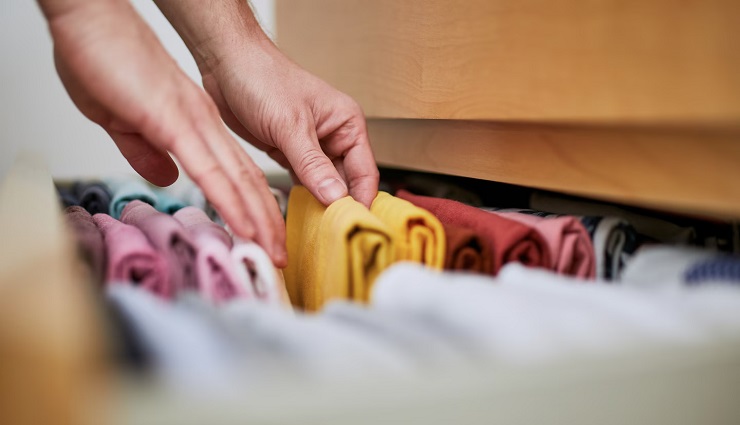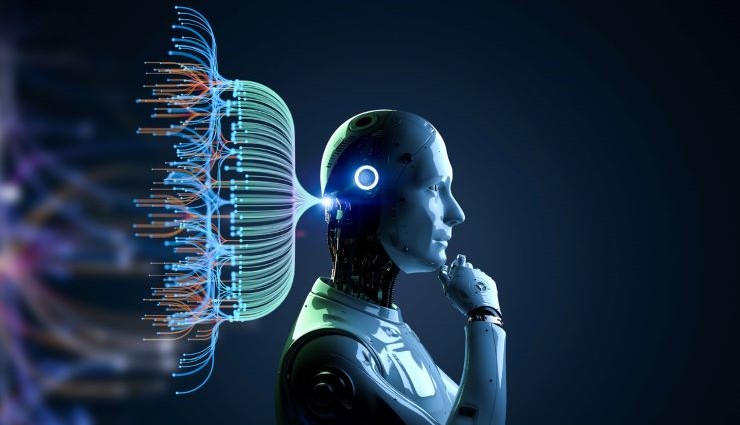Most likely, you have seen the term “nano” next to many products, but have you ever paid attention to its meaning and application? Nano socks, nano napkins, and nano washing supplies are among the products that are widely advertised. These products have attracted many fans due to their unique features compared to standard products. However, many consumers are unaware of the application of nanotechnology and its importance. In this article, we want first to answer the question of what is nanotechnology in simple language and then learn about its applications.
What is nanotechnology?
Nanotechnology, or nanotechnology in simple language, is a branch of science that can be used to design and produce new material on a tiny scale. Small scale means nanoscale, which is measured by nanometer unit. One nanometer is one billionth of a meter. If it is difficult to understand the small size of the nanometer unit, don’t worry because the Nanotechnology Institute of America (NNI) has prepared examples to understand this size better. Here are some examples to make it easier to understand the nanometer unit:
- A sheet of paper is about 100 thousand nanometers thick.
- The size of an atom is about 0.1 to 0.5 nanometers.
- The diameter of a human DNA strand is 2.5 nm.
- A strand of human hair is 80,000 to 100,000 nanometers thick.
Now that you have a better understanding of the nanometer size, we must say that the structures that are produced with the help of nanotechnology have a size between 1 and 100 nanometers. These structures have created a revolution in various fields, from medicine to construction, and now they are considered a vital element for the progress of these fields.
History of nanotechnology

Years before the term nanotechnology was used, Richard Feynman, a physicist, had proposed his idea. On December 29, 1959, in a meeting at the California Institute of Technology, he made a statement that led to the concept of nanoscience. At that meeting, Richard Feynman discussed a process by which scientists could control atoms and molecules separately. Years later, Professor Norio Taniguchi continued Feynman’s research and chose “nanotechnology” for this new science. Finally, modern nanotechnology was created in 1981 to produce microscopes to see atoms.
Where is nanotechnology used?
Nanotechnology has left its mark in every field, and there is room for improvement. For example, according to the “MarketWatch” report, the value of the global nanotechnology market reached $1.3 billion in 2021, and it is expected to reach $34.3 billion by the end of 2030. Considering nanotechnology’s developments in various fields, such a future is not far off. In this section, we introduce the most important applications of nanotechnology. It should be noted that the application of nanotechnology is not limited to the mentioned cases and is more extensive.
1. Nanomaterials
Nanomaterials can be called the most critical achievement of nanoscience. The progress of science and nanotechnology led to the production of nanomaterials. Nanomaterials are used in the accessories we use every day, from the fabric of our clothes to the screen of cameras and glasses. Now, this question may be prominent in your mind, what is nano technology, and what is its application? In response, we must say that nanoscience improves appliance materials. In this way, depending on the type of equipment, it increases their resistance, gives them better conductivity, or improves their characteristics.
2. medical
The field of medicine has undergone significant positive changes with the help of nanotechnology. This technology is used in sports therapy tricks, disease diagnosis, and effective drug delivery methods. To better understand the importance of nanotechnology in medicine, we take the example of the MCL biotechnology company, which succeeded in creating the NanoCelle drug delivery platform. Nanocell transforms the desired drug into nano-sized particles and directly enters the patient’s bloodstream. This company has recently promised a nasal vaccine for Covid-19, which is used with the Nanocell platform.
3. Food industry
Nanotechnology is widely used in the food industry and has a strong presence from food preparation to packaging. When processing food, with the help of nanotechnology, a more attractive taste and color is given to the product, and nano packaging increases the product’s shelf life. Farmers can also use pesticides more safely by using nanomaterials. Farmers who use nanomaterials in their crops can be aware of the toxins and nutrients the crop receives.
4. Electronic
Electronic devices are becoming smaller and more compact day by day. For example, in 2015, BMI announced that it uses 7-nanometer transistors. A few years later, the same company produced 5-nanometer transistors and finally launched 2-nanometer transistors in 2021, which performed better than previous versions. Nanotechnology is one of the main factors in reducing the size and weight of electronic devices. Of course, the application of nano does not end only with this issue, it also improves the conductivity, resistance, and durability of electronic devices.
5. clothing
The application of nano in the production of fabric and clothing was one of the first applications of nano that the public learned about. With nano, it is possible to make clothes waterproof, a feature mainly seen in rain jackets and umbrellas. Another application of nano in clothing is its antibacterial ability in clothes such as t-shirts, pants, and socks. The nanoparticles that sit on these clothes destroy the bacteria that produce foul odors, so the clothes stay clean longer. In a more advanced state, we have nanoparticles that prevent the fabric from wrinkling.
6. renewable energy
Nanotechnology has improved the efficiency of solar cells in the field of renewable energy. Of course, it is interesting to know that nanotechnology is used in renewable energy and dramatically affects non-renewable energy. For example, solutions to preserve resources such as oil and gas under the influence of nano have made progress.
7. the environment
Nanotechnology affects the environment in different aspects. One environmental problem that threatens the planet’s health is water pollution. The headquarters of nanotechnology in America has succeeded in producing a membrane that controls phosphate pollution in rivers and lakes. In addition, another nano-based company has made filters for air conditioners that, in addition to cleaning room air, also destroy airborne viruses. A more recent application in this field dates back to 2020 when an air filter was produced that sterilized itself and purified the surrounding air during the spread of Covid-19.
8. cosmetics
Health, care, or cosmetic products that use nanotechnology have nanoparticles that give them unique properties or improve their texture. For example, titanium dioxide and zinc oxide, the main elements of sunscreen, absorb the surrounding light and give the consumer a shiny and not very interesting appearance. Now, if nanoscience is used to produce sunscreen, it has a lighter texture and does not leave a polished mark.
Advantages of nanotechnology
- Improvement of raw materials: compared to regular raw materials, nanomaterials have more resistance, durability, and less weight and cause significant enhancements in various industries.
- Advances in energy consumption optimization: Using nanomaterials to produce batteries, solar cells, and fuel cells make us less dependent on non-renewable energies such as fossil fuels.
- Improvement of medical methods: using nanomedicines and techniques with more effect are produced. In addition, we see the production of newer and more efficient medical devices with nano.
- Improving water purification: the result will be better if nanomaterials produce water filters. Nanomaterials play a significant role in separating polluting particles from water.
- Improving food quality: with the help of nano, sensors have been produced that can detect food contamination. Nanotechnology has also helped make environmentally friendly fertilizers and pesticides.
Disadvantages of nanotechnology
- Environmental and human risk: The risk of using nanotechnology in the long term has not yet been determined. Prolonged use of nanomaterials, especially in food, may cause damage to human health and the environment.
- Economic risk: Nanotechnology is expected to create economic inequality in some areas. For example, a nanocomputer performs hundreds of times better than the most potent regular computers. Those with access to this technology can benefit more in various fields. In addition to this, nanocomputers will make some jobs disappear by automating some tasks.
- Military Risk: Nanotechnology has raised ethical concerns. Many are concerned that nanotechnology will be used to advance weapons and spy tools.
you say
As you read, nanotechnology can create a revolution in various industries. Maybe before reading this article, you thought that the use of nano is limited only to clothes or sanitary ware. Still, now you know that the importance of this technology has wider dimensions. There is still a lot of time left to determine the effects of nano on our lives and the environment, and this technology still needs to be tested.
Do you think nanotechnology should be limited or more invested in it? Have you ever used nano-based products? You can share your experiences in this field with us and other loved ones in the comments section. Thank you for staying with us until the end of the article.



